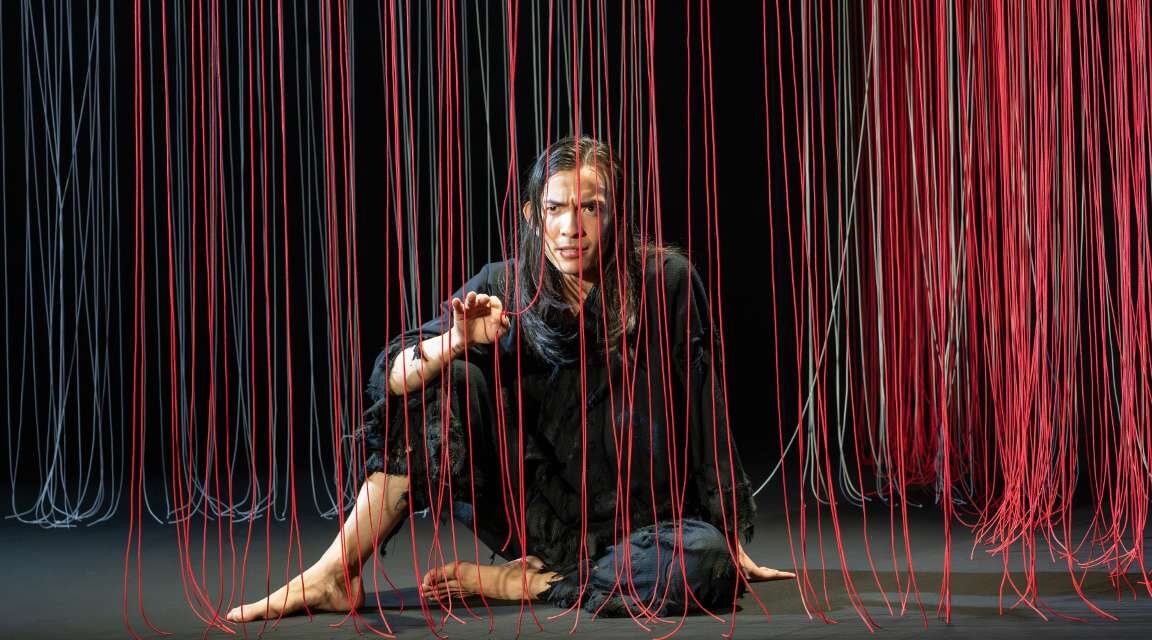By Samuel L. Leiter…
New York has a number of institutions part of whose function is to introduce the artistic expressions of a particular national culture. I don’t know of any that, over decades, has been so consistently successful or prolific at this as the Japan Society on 47th Street, an architectural gem near the United Nations. There, for many years, redoubtable artistic director Yoko Shioya has overseen a remarkable performing arts program displaying the theatre, dance, and music of Japan, both classical and modern.
Her fall 2025 season, Yukio Mishima Centennial Series: Emergences, is devoted to honoring the hundredth year since his birth of Yukio Mishima (1925-1970), internationally renowned as a novelist, playwright, filmmaker, and, among other things, far-right ultranationalist. Mishima’s gruesome death by a combination of seppuku and decapitation sits like a dark cloud above his literary achievements, among them his brilliant 1956 novel, Kinkakuji, translated by Ivan Morris in 1959 as The Temple of the Golden Pavilion
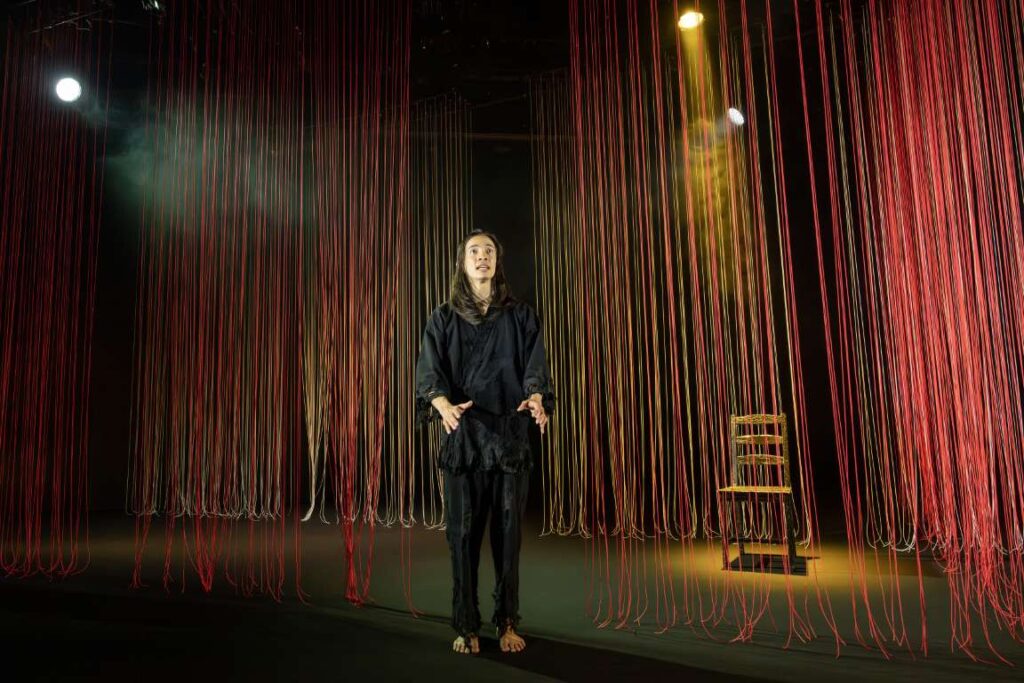
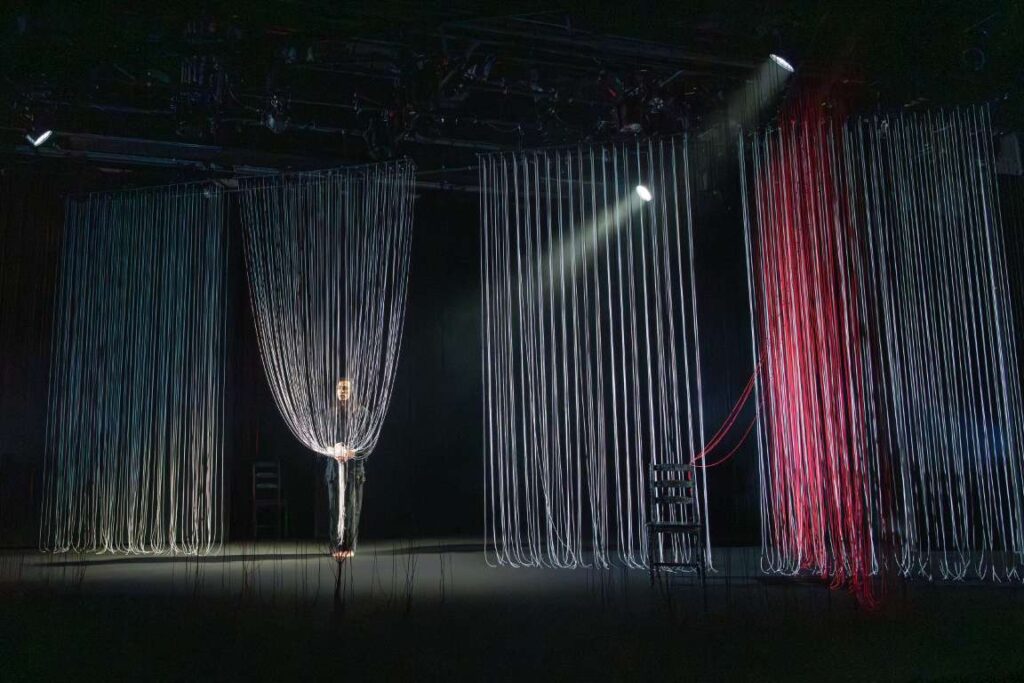
A less than successful adaptation of that novel into a solo play by Leon Ingulsrud and Major Curda is the opening salvo in the Mishima centennial. It’s directed by Ingulsrud, an outstanding translator who was raised in Japan by missionary parents and who has had deep associations with famed avant-garde directors Suzuki Tadashi and Anne Bogart. The play, like its source, tells its story from the perspective of Mizoguchi, a troubled Buddhist acolyte who becomes so obsessed with the beauty of Kyoto’s famed Temple of the Golden Pavilion (Kinkakuji) that he burns it down.
Mizoguchi (Major Curda) is based on a real person, Hayashi Yōken, who was 21 when he set fire to the temple in 1950; the narrative is an imaginative conflation of fact and fiction, using Mizoguchi’s inner monologue, confessions, and psychological unraveling to express the character’s alienation, envy, and descent into destructive obsession. As Ingulsrud has noted, “Mishima’s protagonist can be viewed as a precursor to disaffected young Americans.”
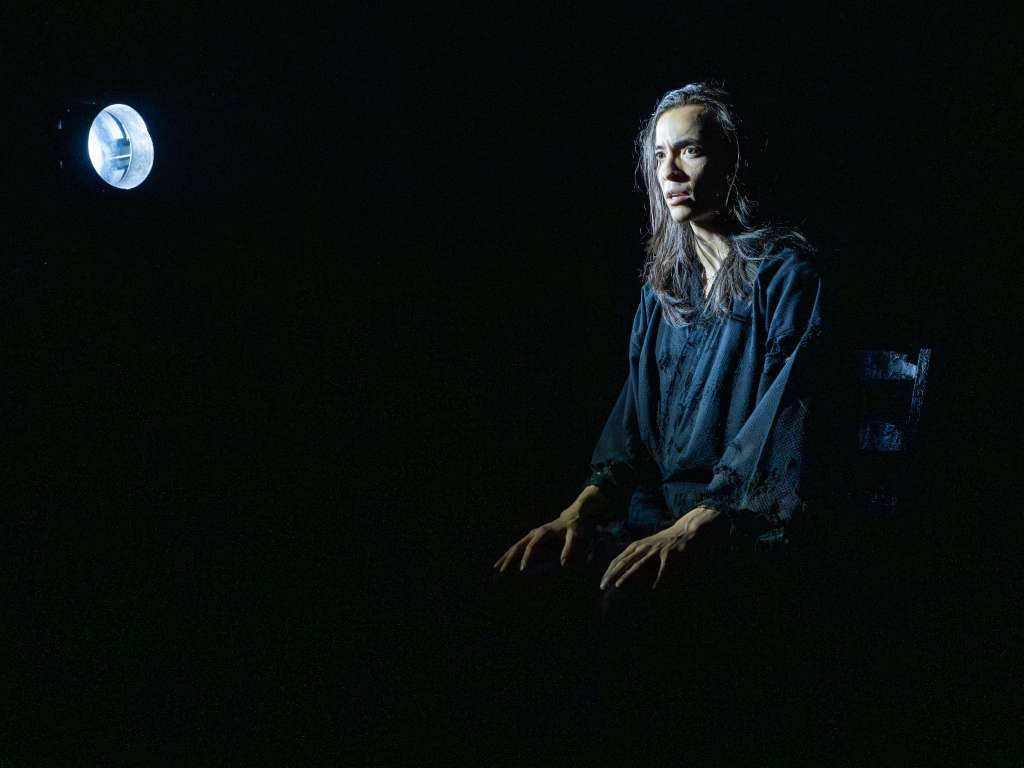
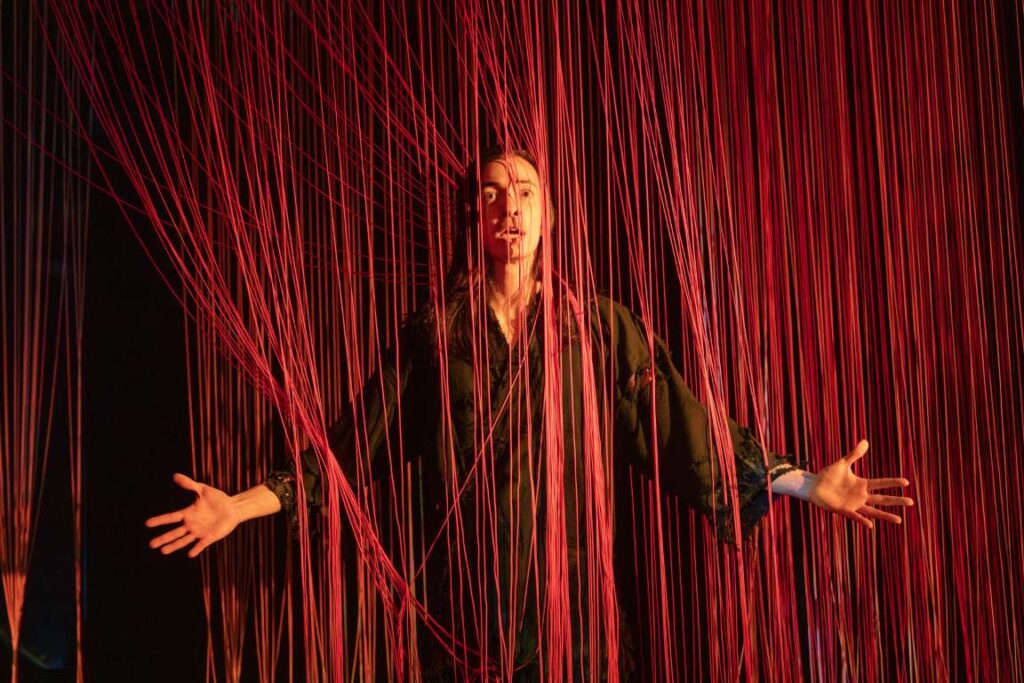
For all its basis in an actual historical event, Mishima’s original is deeply probing, both philosophically and psychologically. Still, despite its deployment of multiple dramatic events as reflected in Mizoguchi’s experiences, and even dialogue attributed to other persons, it’s disappointingly undramatic as a play. It’s visually pleasing, though, with a simple yet unusual set by renowned artist Chiharu Shiota, who has a striking installation created out of yarn and paper documents on the second floor.
For Kinkakuji she has created black, gold, and red threadlike curtains that are set against a black background and run parallel to the edge of the bare stage. These allow Mizoguchi, barefoot and dressed in a black ensemble resembling a pajama-like lounge suit or something a spa instructor might wear, to move among the hanging threads and now and then tie them together in decorative ways, sometimes shaping them to resemble what could be trees or rakes. If there’s some deeper meaning, I missed it.
As further heightened for eye appeal by lighting designer Marie Yokoyama, who, with projection/video designer Takaaki Ando, concocts some fine smoke and fire effects, the piece floats by like an acted-out installation piece, with moody music by Ethan Phelps. These contributions help make the narrative more an extension of the aesthetic than a driving dramatic driving force. I’m sure that some will appreciate this approach, and I’m also sure others will find it a soporific.
Even the casting of Curda, who collaborated on the script, is problematic, since Mishima’s Mizoguchi is a decidedly ugly man, with two clubfeet and a bad stutter. These traits contribute to his love-hate relationship with the beauty of the Golden Pavilion. Major Curda, however, is a handsome, graceful figure, his androgynous attractiveness heightened by a mane of beautifully groomed long hair deserving of a shampoo commercial.
While he is to be commended for the substantial feat of memorizing the complex, 90-minute script, for his occasional vocal shifts to speak other characters’ lines, and for the urgency of his work, Curda’s performance is more of a narration—a script-less reading—than a characterization; Mizoguchi’s story is being told but Mizoguchi isn’t telling it. Even his stutter has been aestheticized, turned into the simple repetition of phrases, with no apparent speech defect.
I’ve visited the perfectly reconstructed Kinkakuji several times on trips to Japan. It’s one of the most popular tourist spots in Kyoto and can be very crowded. But its gorgeousness is undeniable, and the idea that someone—a novice Buddhist priest, no less—could have burned it down is inconceivable. Mishima sought by intellectual means to explain how this might have happened by writing a novel, allowing for deep introspection of potential motives. Despite being a talented and prolific playwright—in multiple genres—Mishima chose to tell this story in a novel. This reviewer wishes it had remained there, and that something Mishima had written for the stage had been revived instead.
Photo Credit: Richard Termine
Kinkakuji
Japan Society
333 E. 47th Street, NYC
Through September 20

